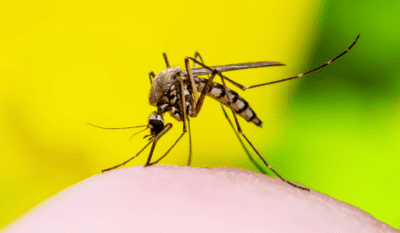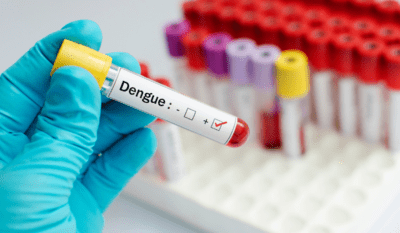Is Dengue a Communicable Disease – How Dengue Spreads

Is Dengue a communicable disease? The answer lies in the intricate dynamics of Dengue transmission. Dengue fever, caused by the Dengue virus, is a mosquito-borne infectious disease prevalent in tropical and subtropical regions. The World Health Organization (WHO) recognizes Dengue as a major public health concern.
Introduction
Dengue, a term that sends shivers down the spine of those residing in tropical and subtropical regions, is a viral infection caused by the Dengue virus. Its importance extends beyond its symptoms; understanding its communicability is crucial for effective prevention and control.
Understanding Dengue
Dengue comes in various forms, from milder Dengue fever to severe Dengue hemorrhagic fever and Dengue shock syndrome. The Dengue virus, primarily transmitted by the Aedes mosquito, poses a significant public health concern globally.
Check This – How to Take Care of Skin in Winter Naturally?
Dengue Transmission
The Aedes mosquito acts as the main vector for Dengue, transmitting the virus to humans through its bites. However, Dengue is not solely dependent on mosquitoes; human-to-human transmission can occur in certain situations, adding to the complexity of its spread.

Is Dengue Communicable?
To address the question of Dengue’s communicability, it’s essential to understand the classification of communicable diseases. While Dengue doesn’t spread through casual contact, its transmission through infected mosquitoes and, in rare cases, from person to person places it within the realm of communicable diseases.
Factors Affecting Dengue Transmission
The spread of Dengue is influenced by environmental factors such as temperature and humidity, as well as population density and urbanization. Understanding these factors is crucial for devising effective prevention strategies.
Signs and Symptoms of Dengue
Identifying Dengue is challenging due to its symptoms mirroring those of other illnesses. These include fever, headache, pain behind the eyes, joint and muscle pain, and a characteristic rash. Recognizing these signs early is vital for prompt medical intervention.
Preventive Measures
Preventing Dengue involves a two-pronged approach: controlling mosquito populations and personal protection. Implementing measures like insecticide spraying, eliminating breeding grounds, and using protective clothing can significantly reduce the risk of infection.
Dengue Outbreaks
Dengue outbreaks are a recurring challenge globally, affecting millions of people each year. The impact on public health is substantial, straining healthcare systems and underscoring the need for proactive measures.
The Role of Community Awareness
Raising awareness within communities is paramount for Dengue control. Educating individuals on preventive measures, recognizing symptoms, and seeking timely medical attention can contribute to curbing the spread of the virus.
Government Initiatives
Governments play a pivotal role in Dengue prevention through initiatives like mosquito control programs and public health campaigns. Collaborations with international organizations further enhance the collective effort against Dengue.

Research and Innovation
Ongoing research on Dengue aims to fill crucial gaps in our understanding of the virus. The quest for a specific antiviral treatment and the development of a Dengue vaccine are promising areas that could revolutionize Dengue management.
Global Efforts to Combat Dengue
The World Health Organization (WHO) actively engages in Dengue control, working alongside countries and other organizations to implement preventive strategies and enhance healthcare infrastructure.
Challenges in Dengue Management
Despite progress, challenges persist in Dengue management. The absence of a specific antiviral treatment and issues in implementing effective mosquito control programs pose hurdles in the fight against Dengue.
Future Prospects
Looking ahead, advancements in Dengue research offer hope for better prevention and treatment strategies. The potential for a Dengue vaccine and ongoing efforts to control mosquito populations paints a more optimistic picture for the future.
Conclusion
In conclusion, Dengue is undeniably a communicable disease, albeit through specific vectors. The multifaceted nature of its transmission requires a comprehensive approach involving community awareness, government initiatives, and global collaboration. As research progresses, there’s optimism that Dengue’s impact can be mitigated, ultimately reducing the burden on public health systems.
FAQs
Can Dengue be transmitted from person to person?
While rare, person-to-person transmission of Dengue can occur through blood transfusion or organ transplantation.
Are there any specific medications for treating Dengue?
Currently, there is no specific antiviral treatment for Dengue. Supportive care remains the mainstay of management.
What role does climate play in Dengue transmission?
Environmental factors like temperature and humidity influence mosquito activity, impacting the transmission of Dengue.
Is Dengue more prevalent in urban areas?
Yes, Dengue tends to be more prevalent in densely populated urban areas with a higher concentration of Aedes mosquitoes.
How can individuals protect themselves from Dengue?
Using mosquito repellent, wearing long sleeves and pants, and eliminating mosquito breeding sites can help prevent Dengue.
